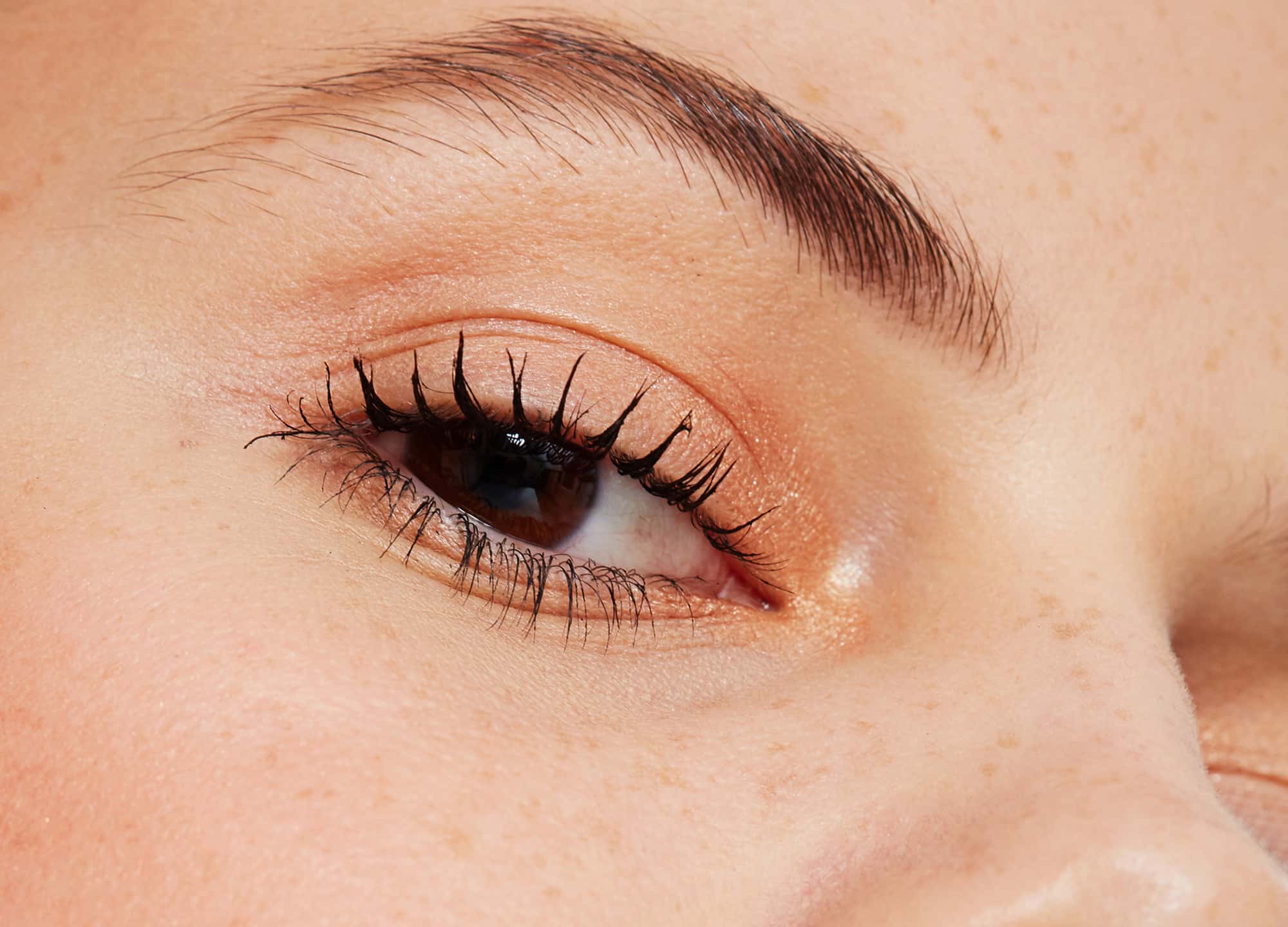In July, Osmotica pharmaceuticals announced the FDA approval of Upneeq, a new nonsurgical treatment for acquired blepharoptosis, aka ptosis or drooping upper eyelid. “Ptosis has to do with the actual position of the eyelid,” says Dr. Rob Schwarcz, a board-certified oculoplastic surgeon in New York City. The result of the medical condition, he explains, is that the eyelash line sits lower down on the pupil, creating a droopy lid that makes the eyes look small and sleepy.
How Upneeq for drooping eyelids works
Typically, the solution for drooping eyelids is ptosis surgery, which differs from a blepharoplasty, aka an eyelid lift, in that it doesn’t remove excess skin or fat from the eye area. Instead, “it advances or hems the muscle that opens the eye so that it’s shorter vertically and will open the eye wider,” says Dr. Schwarcz, who was on Osmotica’s advisory board for Upneeq. But now those suffering from the condition have another option, in the form of daily eye drops that immediately contract the muscle, to lift the eyelid.
Dr. Schwarcz has seen some patients achieve results that are comparable to those from ptosis surgery, but the effects of the drops last up to only six hours. After the medication fully wears off, he says, the eye drops can be used once more in a day, for maximum effect. However, he notes, “it’s comparable [to surgery] for someone who has only a small amount of eyelid droop, because [the drop creates] a small amount of eyelid raise. If someone has a very significant droop, obviously the surgical result would be far greater.”
Dr. Mehryar (Ray) Taban, a board-certified oculoplastic surgeon in Beverly Hills, California, agrees: “[Upneeq] is a good temporary solution for mild, perhaps moderate, ptosis, but it won’t be enough for severe ptosis.” Lifting effects aside, Dr. Taban adds that the duration of results is not remotely comparable. Ptosis surgery creates results that are “essentially permanent or on average last about 20 years,” he says.
But Dr. Schwarcz sees Upneeq as a possible solution for a different use that doesn’t call for surgery: Botox-induced ptosis. “One of the complications of getting Botox is a temporary droop in the lid if the Botox gets into the upper eyelid muscle,” explains Dr. Schwarcz. This could happen from a leak or from incorrect injection technique. “That person would more than likely benefit from using the drops for the two months it takes for the eyelid to come back up.”
The prescription isn’t for everyone though. If you have excess skin or fat around the eye and are considering an eyelid lift, Dr. Schwarcz warns that ptosis correction could make the area look worse. He likens the effect to that of a Roman shade. When opening shades to let more light in from a window, the fabric scrunches at the top. Using Upneeq then to open up the eye when there is excess skin could have a similar “scrunching” effect.
Potential Upneeq side effects
“Another side effect of the drops is what we call rebound redness,” says Dr. Taban. Rebound redness—when the blood vessels stop reverting back to their original size once the drug wears off—is a risk with overreliance on eye drops of any kind. “That’s a big reason I don’t consider Upneeq a good long-term option. I would not prescribe it for more than a few weeks,” he says. Additional side effects of the drooping eyelid treatment include those that are typical of eye drops, like dryness, blurred vision, and irritation.
Only time will tell, but down the line, Dr. Schwarcz sees Upneeq having “significant implications in the beauty world” for those simply seeking the instant, short-term effect of bigger eyes that “pop.” For now, it’s worth discussing the drug with your eye doctor if you’re dealing with ptosis and hoping for a nonsurgical eyelid lift solution.











